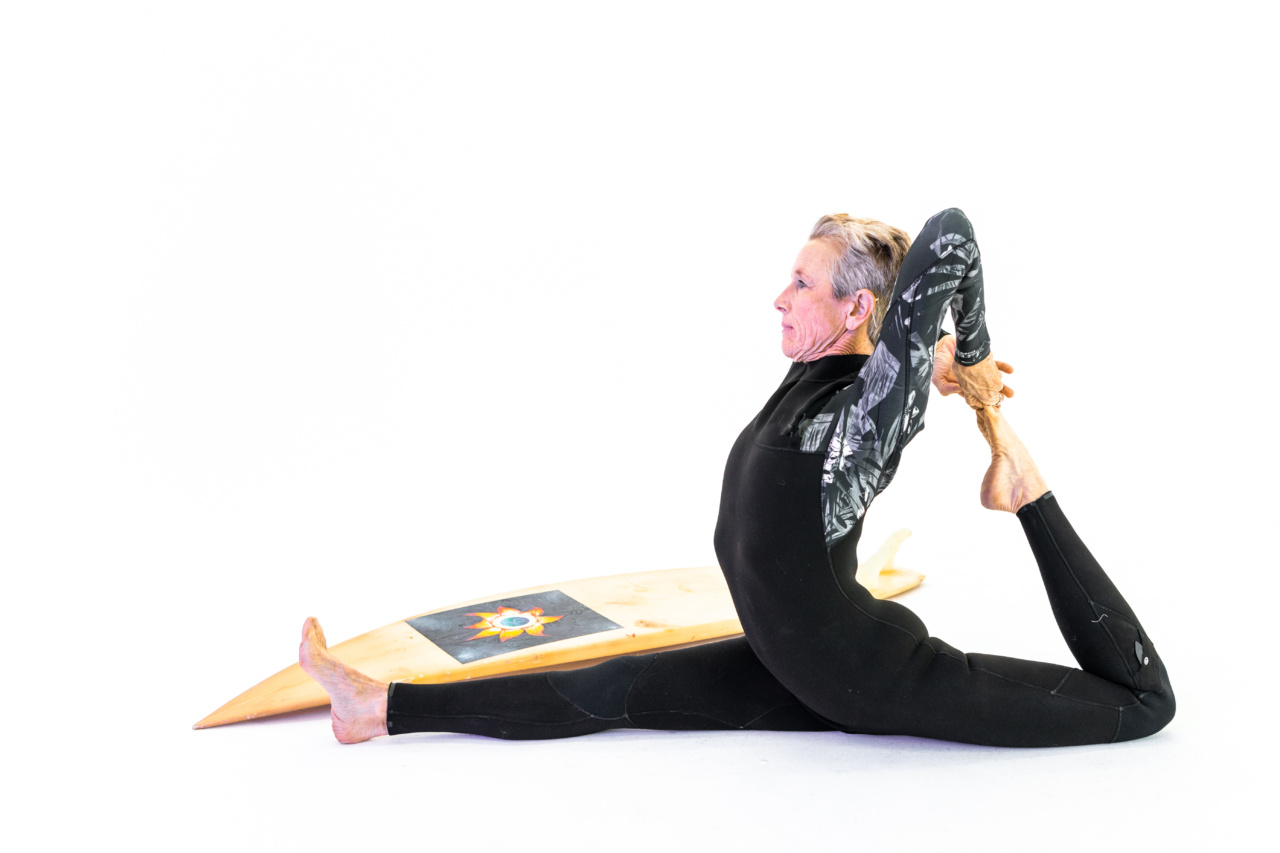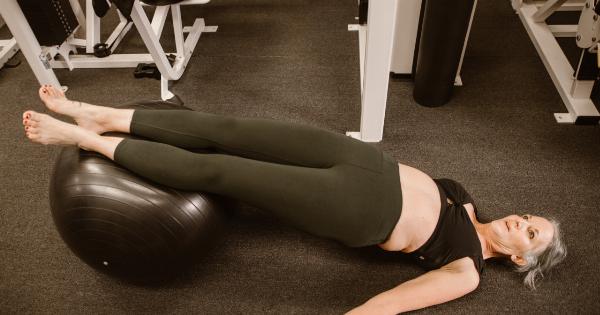Menopause is a natural phase in a woman’s life that marks the end of her reproductive years. While it is a normal part of the aging process, it can also bring about various symptoms that can be challenging to deal with.
Hot flashes, night sweats, mood swings, and weight gain are just a few of the common symptoms experienced during menopause.
While there is no magic pill to eliminate all menopausal symptoms, regular exercise has been proven to be an effective solution in reducing their impact and improving overall well-being.
By incorporating exercise into your daily routine, you can alleviate many of the physical and emotional challenges associated with menopause.
Why Exercise is Crucial during Menopause
Menopause brings hormonal changes that can have a significant impact on a woman’s body and mind. Estrogen levels drop, leading to changes in metabolism, bone density, and mood stability.
Regular exercise helps mitigate these changes through various mechanisms.
1. Weight Management
One of the most common issues during menopause is weight gain. As metabolism slows down and hormonal imbalances occur, it becomes easier to put on extra pounds.
Engaging in regular exercise, such as cardio workouts and strength training, can help you manage weight by burning calories, increasing muscle mass, and boosting metabolism.
2. Reducing Hot Flashes and Night Sweats
Hot flashes and night sweats are some of the most bothersome symptoms of menopause.
While exercise might temporarily increase body temperature, regular physical activity has been found to reduce the severity and frequency of hot flashes and night sweats over time. The “cooling effect” of exercise helps regulate body temperature more efficiently.
3. Improving Bone Density
During menopause, the drop in estrogen levels can lead to a decrease in bone density, increasing the risk of osteoporosis and fractures.
Weight-bearing exercises and resistance training can help maintain and improve bone health by stimulating new bone formation and strengthening existing bones.
4. Boosting Mood and Reducing Anxiety
Many women experience mood swings, irritability, and anxiety during menopause due to hormonal fluctuations.
Exercise releases endorphins, also known as “feel-good” hormones, which can help improve mood and reduce feelings of anxiety and depression.
5. Enhancing Cardiovascular Health
Estrogen plays a crucial role in maintaining healthy blood vessels and heart function. With the decline of estrogen levels during menopause, the risk of cardiovascular disease increases.
Engaging in aerobic exercises, such as brisk walking, swimming, or cycling, can help strengthen the heart, improve blood circulation, and reduce the risk of heart disease.
6. Promoting Quality Sleep
Menopause can disrupt sleep patterns, leading to insomnia or poor sleep quality. Regular exercise can help regulate sleep patterns by reducing stress, promoting relaxation, and improving overall sleep quality.
However, it is essential to avoid intense workouts close to bedtime, as they may have the opposite effect.
7. Increasing Energy Levels
Many women experience a decline in energy levels during menopause, which can affect daily activities and overall well-being.
Regular exercise helps boost energy levels by improving cardiovascular fitness, increasing muscle strength, and enhancing overall stamina.
8. Managing Joint and Muscle Pain
Menopause can exacerbate joint and muscle pain for some women. Incorporating low-impact exercises, such as yoga and swimming, into your routine can help reduce pain, maintain joint flexibility, and improve overall musculoskeletal health.
9. Strengthening Pelvic Floor Muscles
As women age, there is a higher risk of pelvic floor weakness, leading to bladder control issues and pelvic organ prolapse.
Regular exercises targeting the pelvic floor muscles, such as Kegels, can help strengthen these muscles and prevent or alleviate these concerns.
10. Building Social Connections
Participating in group exercises or joining fitness classes can not only improve your physical fitness but also provide an opportunity to socialize and build new connections.
Menopause can be a challenging phase, but having a support system can make all the difference in managing its symptoms.
Getting Started with Exercise during Menopause
Before starting any exercise program, it is essential to consult with your healthcare provider, especially if you have any underlying medical conditions. They can provide personalized advice and guidance based on your individual needs.
Once you have the green light from your doctor, it’s time to get moving! Here are some tips to help you get started with exercise during menopause:.
1. Set Realistic Goals
Start by setting realistic and achievable goals for yourself. Gradually increase the intensity, duration, and frequency of your workouts as your fitness level improves.
2. Choose Activities You Enjoy
Exercise doesn’t have to be monotonous or boring. Engage in activities that you enjoy, whether it’s dancing, swimming, cycling, or practicing yoga. Finding pleasure in your workouts will make it easier to stick to them in the long run.
3. Make it a Habit
Consistency is key when it comes to reaping the benefits of exercise. Aim for at least 150 minutes of moderate-intensity aerobic activity or 75 minutes of vigorous-intensity activity per week.
Additionally, incorporate strength training exercises at least twice a week.
4. Listen to Your Body
While pushing yourself is essential for progress, it’s crucial to listen to your body’s signals. If you experience pain, dizziness, or any concerning symptoms during exercise, take a break and seek medical advice if needed.
5. Stay Hydrated
Drink plenty of water before, during, and after your workouts to stay properly hydrated. Dehydration can exacerbate menopausal symptoms, so it’s important to make hydration a priority.
6. Warm Up and Cool Down
Always start your exercise sessions with a proper warm-up to prepare your muscles and reduce the risk of injury. Similarly, finish with a cool-down period to gradually lower your heart rate and stretch your muscles.
7. Get Support
Consider exercising with a friend or joining a menopause-specific fitness group. Having a workout buddy or a supportive community can provide motivation, accountability, and a sense of camaraderie.
8. Pay Attention to Your Nutrition
Exercise and nutrition go hand in hand. Maintain a balanced diet rich in fruits, vegetables, whole grains, lean proteins, and healthy fats to fuel your workouts and support your overall health.
9. Be Patient and Kind to Yourself
Menopause is a unique journey for every woman, so give yourself grace and be patient with the progress. Celebrate small victories and focus on how exercise makes you feel, both physically and mentally.
10. Seek Professional Guidance
If you’re new to exercise or need extra guidance, consider working with a certified personal trainer or fitness instructor who specializes in menopause-related fitness.
They can provide expert advice, recommend appropriate exercises, and help you reach your goals safely and effectively.
Remember, menopause is a transformative phase of life, and incorporating exercise into your routine can help you navigate it more smoothly.
Engaging in regular physical activity not only lessens the impact of menopausal symptoms but also improves your overall health and well-being. Embrace the power of exercise and embrace this new chapter of your life with confidence and strength!.































